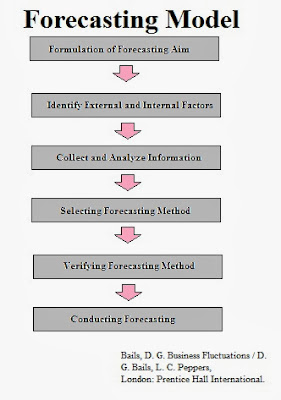Forecasting is usually seen as a process of
understanding trends that influence the status of economic objects. Such outcomes
continually adjust as new information becomes available. It is about knowing
future economic opportunities through analysis based upon objective laws of
reality. Some can see it as a prediction of events based in theory and
practical laws of nature. There are number of concepts related to forecasting:
-forecasting is assessed not from
a static function but from a position within a process;
-economic index is usually
considered to be the object of forecasting;
-it is a concurrent part of
every economic subject’s activity;
-forecasting tools are used to
make predictions.
Forecasting the market demand is
a process that seeks to analyze the present status of market demand and to predict
changes in the market for a specified period of time. Such predictions help
organizations adjust their strategies and offerings in a way that help them
overcome environmental factors and draw the most potential for revenue. Every
product and service has a lead-time and understanding trends will help ensure
resources are not wasted in the developmental process.
Bails and Peppers(1993) offers a forecasting model that includes
action steps:
-Formulation of the forecasting claim.
-Identification of external and internal factors.
-Collection and analysis of information.
-Selection of forecasting methods.
-Verification of the forecasting method.
-Conducting the forecasting.
The authors indicate that looking at market indexes
and government information make the process of forecasting easier. The use of
available market data is used as an overall guide to specific product/service
forecasts. The more information governments and other institutions offer the
easier it is to find strategic pathway to developing sustainable operations.
There is bottom-up forecasting and top-down
forecasting. In bottom-up forecasting the individual sales revenue of each of a
firm’s products are used to determine the revenue projections of the firm. In a
top-down forecasting, the highest-level sales projections are used for main
products and the analysis moves downward into smaller product areas. It
provides two slightly different projections.
The authors found that a majority of firms use surveys
in their forecasting method. They also leave far too little information on
influence of external market factors (i.e. global trends). There are times when a single forecasting
model can create improper market assumptions. These firms may fail to consider
alternative sources of information or counter perspectives. Once completed, the firms may not assess the appropriateness
and accuracy of their chosen methods thereby perpetuating the problem.
In agreement with the author, the forecasting method
is limited by the analytical abilities of the researcher as well as the models they
chose. Where there is no perfect model available, the use of multiple models will
develop increasingly accurate assessments. Firms should consider alternative
scenarios in order to help themselves prepare for market changes or previous
inaccurate assessments. Using a wider
macro-assessment of global trends within their analysis will help ensure that
the global market is accurately reflected. All local trends exist within a
wider global trend.
Bails, D. & Peppers, L.
(1993). Business Fluctuations. London:
Prentice Hall International.
Pilinkienu, V. (2008).Market demand forecasting
models their elements in the context of competitive market. Engineering Economics, 60 (5).

No comments:
Post a Comment